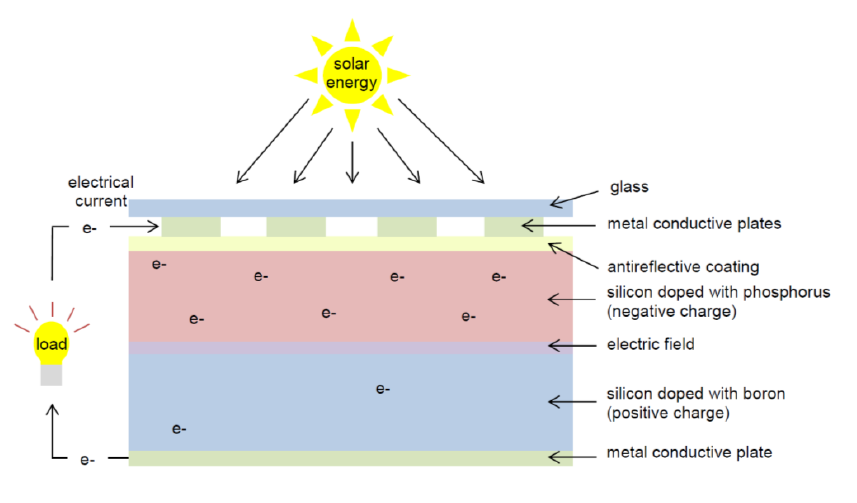Photovoltaic cells (PV Cells) are the most common solar cells used in commercially available solar panels.
PV Cells were first used to provide power onboard space crafts. Since then the technology has advanced, its reliability has improved and its cost has declined. Solar panels now provide electricity to private residences and the grid.
PV Cells capture the electrons freed when certain materials absorb light and, in the process, convert light energy into electricity.
Each PV cell is made up of two layers of semi conducting material, most commonly silicon. One layer has a positive charge and the other a negative charge. The charges are added to each layer by adding another material. To create the negative charge in one layer, phosphorous is commonly added which results in more electrons. To create the positive charge in the other layer, boron is commonly added which results in less electrons. The layering of positive and negative charges creates an electric field at the junction of the layers.
When sunlight hits the PV Cell it is absorbed by the semiconductor material. The absorption of sunlight pushes an electron free of the electric field. Metal conductive plates on both cell layers and a wire connecting them form a circuit which allows the ‘freed’ electrons (e-) to flow as DC electrical current. The electrical current can be used to power things on site, stored or connected to the grid (load).
The electrical current produced is dependent on how much sunlight is absorbed. As silicon is shiny and reflects sunlight, an antireflective coating is generally applied to reduce reflection losses. The electrical current together with the cell’s voltage (produced by the electric field) defines the power (wattage) that a solar cell can produce.
PV Cells wired together form a ‘module’ and modules wired together form an ‘array’. In general, the larger the area of the array, the more electricity can be produced.
Finally, a glass plate is commonly used to protect the cells from the elements.

Diagram of electrons being freed by the absorption of solar radiation and captured by a solar cell.
For more information or discussion, please contact HopgoodGanim Lawyers' Resources and Energy team.